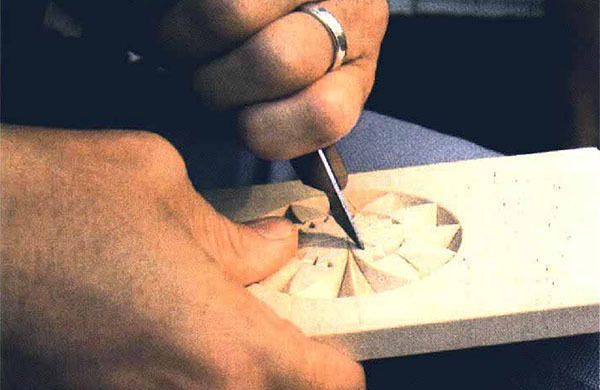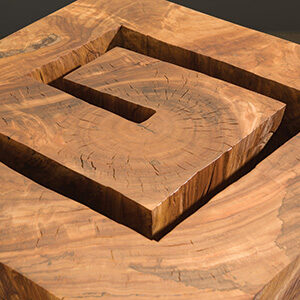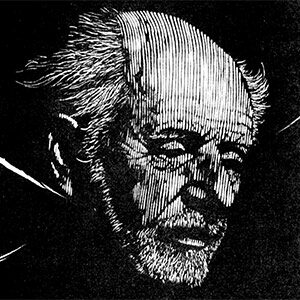All About Carving Techniques

Primarily an ornamental treatment today, carving on furniture has its origin in purely practical reasons, such as the need to shed water, prevent dust buildup, disguise joints, or provide softer edges. Similar to molding, which may be thought of as a form of carving, carvings evolved to lessen the chance of damage, either to the woodwork or the user.
The Basics:
• A short history: Decorate a piece for form or function.
• A variety of styles: Chip carving and linenfold, just to name a few.
• Choosing tools and materials: Gouges and knives, basswood to burls.
A short history of carving
Whatever their original inspiration, decorative carvings typically are a good reflection of their period and often serve as a useful means of dating and identification. Parchemin (parchment fold) and linenfold carving are two forms that illustrate both the original functional inspiration as well as changing esthetic sensibilities. This form of carving is thought to have been purely functional, the result of the need to strengthen a panel that must be thinned at its edges to fit into its containing framework by forming a thicker and stronger central portion. At the same time the opportunity was taken to add religious significance by designing the raised part (in the case of parchemin) to represent the initial letter of the name ‘Iesu.” Note, however, that the name “parchemin” derives from the fact that carving a panel to produce the shape of an initial “I” also results in producing the appearance of an open book, or parchment.
The subsequent development of panel carving into the more ornate form known as linenfold (a pattern that imitates the folds of curtains and draperies) generally postdates the use of the parchemin pattern. The innumerable patterns of linenfold can be used reliably to date its manufacture, as can the different styles of relief carving that also can be seen in much Renaissance frame and paneling.
Another great area of carving is that used in picture frames, the various period styles of which are also distinctive.
A variety of styles
Chip carving is one if the oldest and simplest carving techniques used in woodworking. Also known as kerbschnitzen, the technique uses a short-bladed knife to cut intricate designs and complicated geometric patters through a series of triangular incisions in wood.
Relief carving comes in two styles: high relief, which uses deep cuts to decorate a piece with a pattern or design; and low relief, a similar technique with a shallower cut. These techniques can be used in a variety of projects, from chair backs to painting-like wall hangings.
Fretwork is a style of carving that produces intertwining designs. It is done either as a relief carving on a background, or with a coping saw and carving tools to produce a design with open space.
Sculptural wood carving might be considered more fine art than woodworking, but it requires some of the same skills, techniques, and carving tools (from gouges to chainsaws) used in other areas of woodworking.
Choosing tools and materials
The tools in a carver’s tool chest will vary according to the style of carving and on the size and intricacy of the work being done. Tools can range from standard bench chisels, to carving gouges and knives, to power grinders.
Any species of wood can be used for carving. However, some are much easier to work than others. Basswood and mahogany are the most common woods used, as both species are relatively easy to carve and hold up well to wear and tear. Beware of stringy woods or those with highly-figured grain patterns, as they can be challenging to work.
Graham Blackburn is a furniture maker, author, and illustrator, and publisher of Blackburn Books www.blackburnbooks.com) in Bearsville, N.Y.






















Log in or create an account to post a comment.
Sign up Log in